Abstract
Epilithic bacteria were isolated nonselectively from riverbed stones and examined by gel zymography for their ability to produce alkylsulfatase (AS) enzymes and thus to metabolize alkyl sulfate surfactants such as sodium dodecyl sulfate. The percentages of AS+ isolates from stone epilithon at five sites from the source to the river mouth were measured on five sampling days spread over 1 year. The results showed that (i) the prevalence of epilithic AS+ strains (as a percentage of all isolates) was much higher at polluted sites than at the source; (ii) when averaged over the whole river, percentages of AS+ strains were significantly higher at the end of summer compared with either the preceding or the following winter; (iii) analysis of site-sampling time interactions indicated that water quality factors (e.g., biochemical oxygen demand and dissolved oxygen concentration) rather than climatic factors determined the distributions of epilithic AS+ isolates; (iv) constitutive strains were the most prevalent (7.2% of all isolates), with smaller numbers of isolates with inducible (4.5%) and repressible (1.7%) enzymes.
Full text
PDF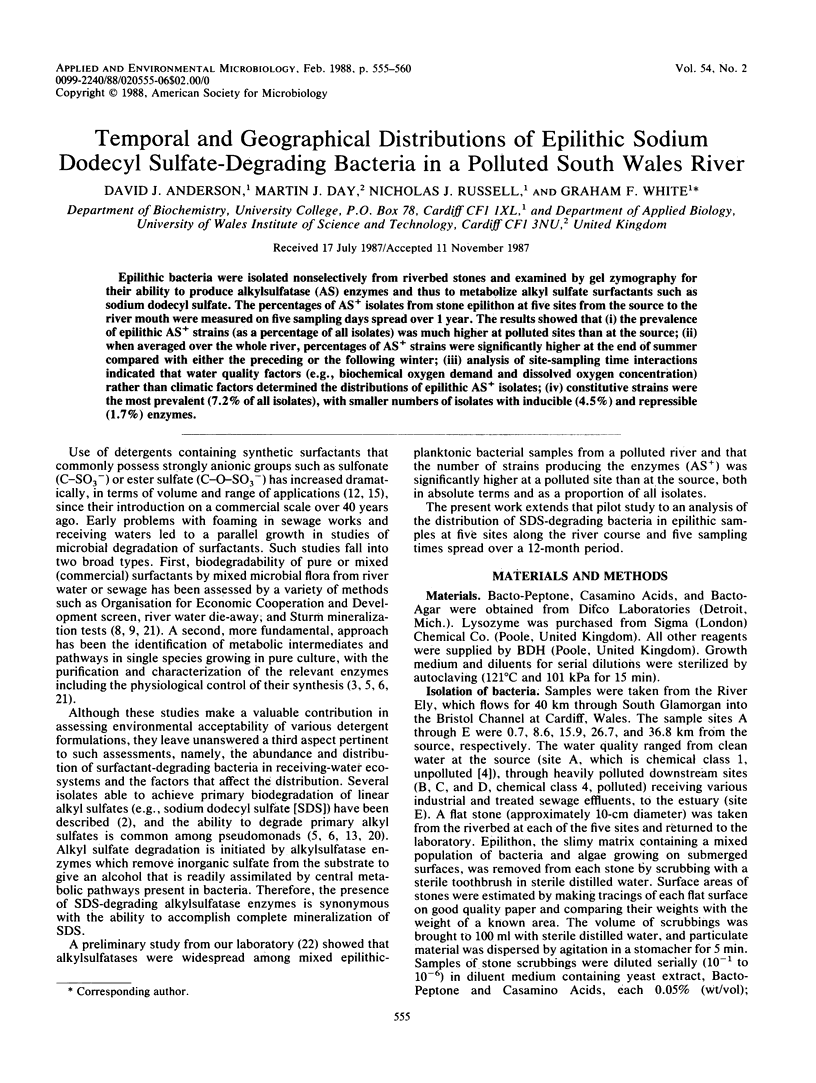
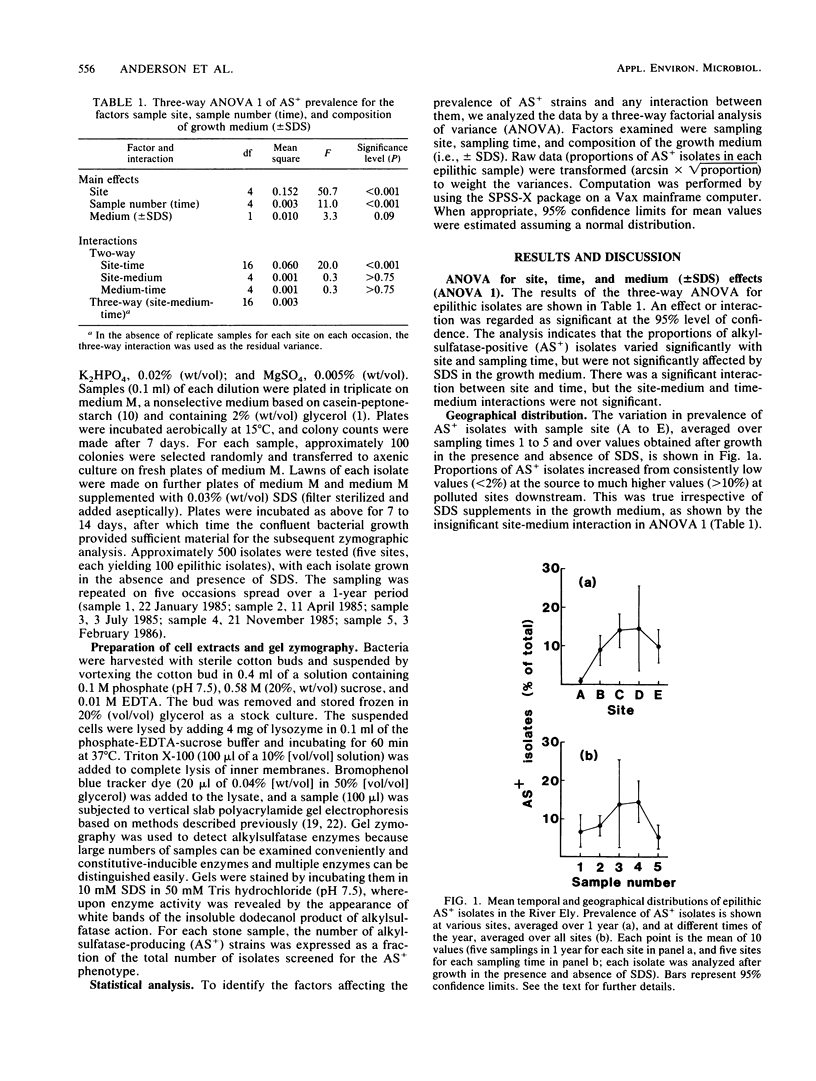
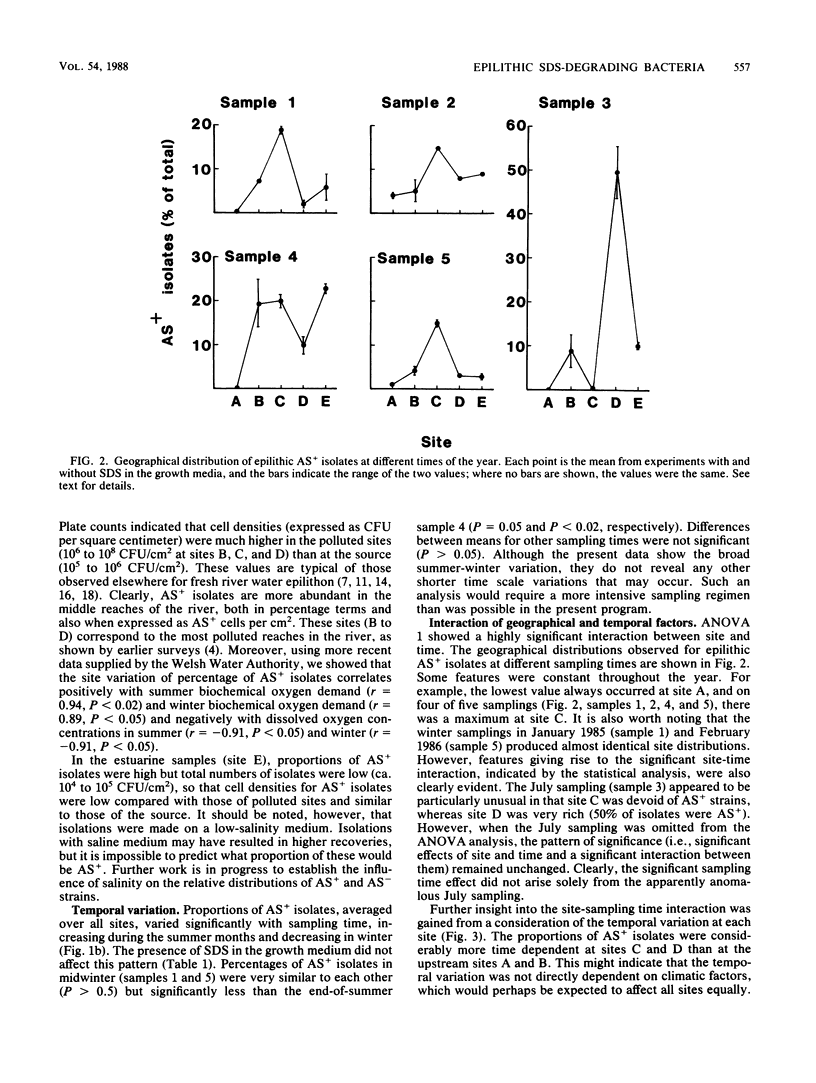
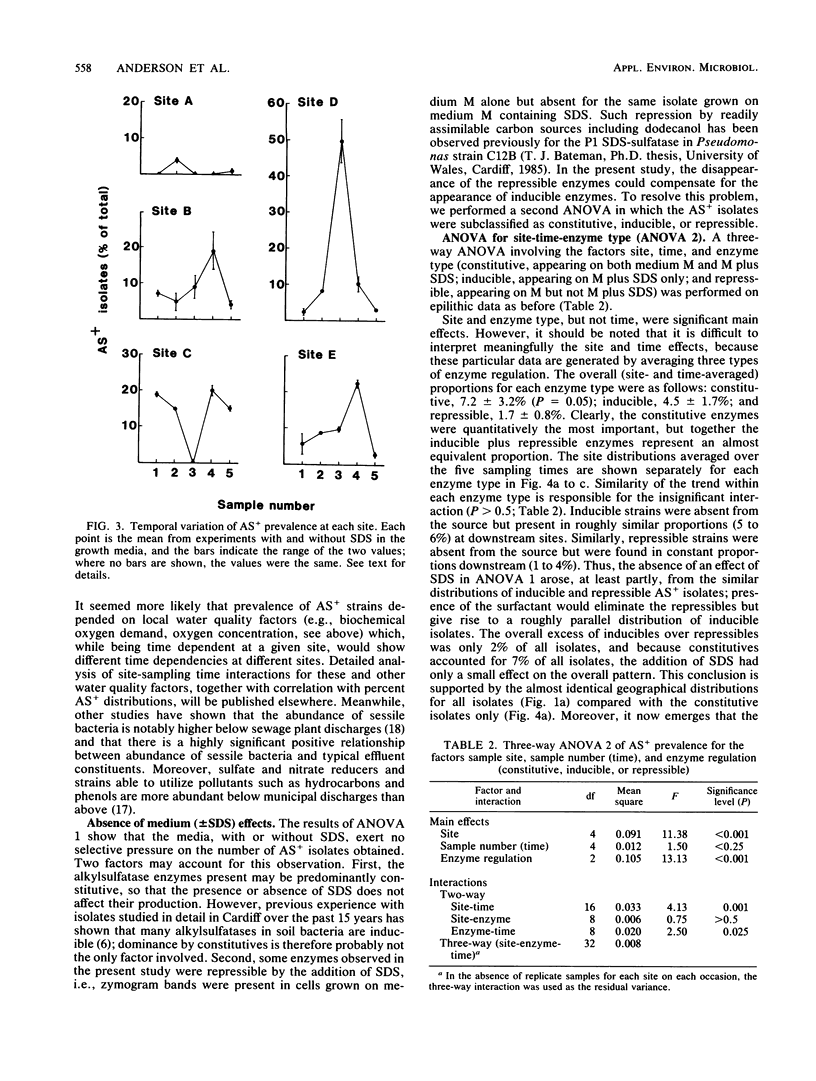
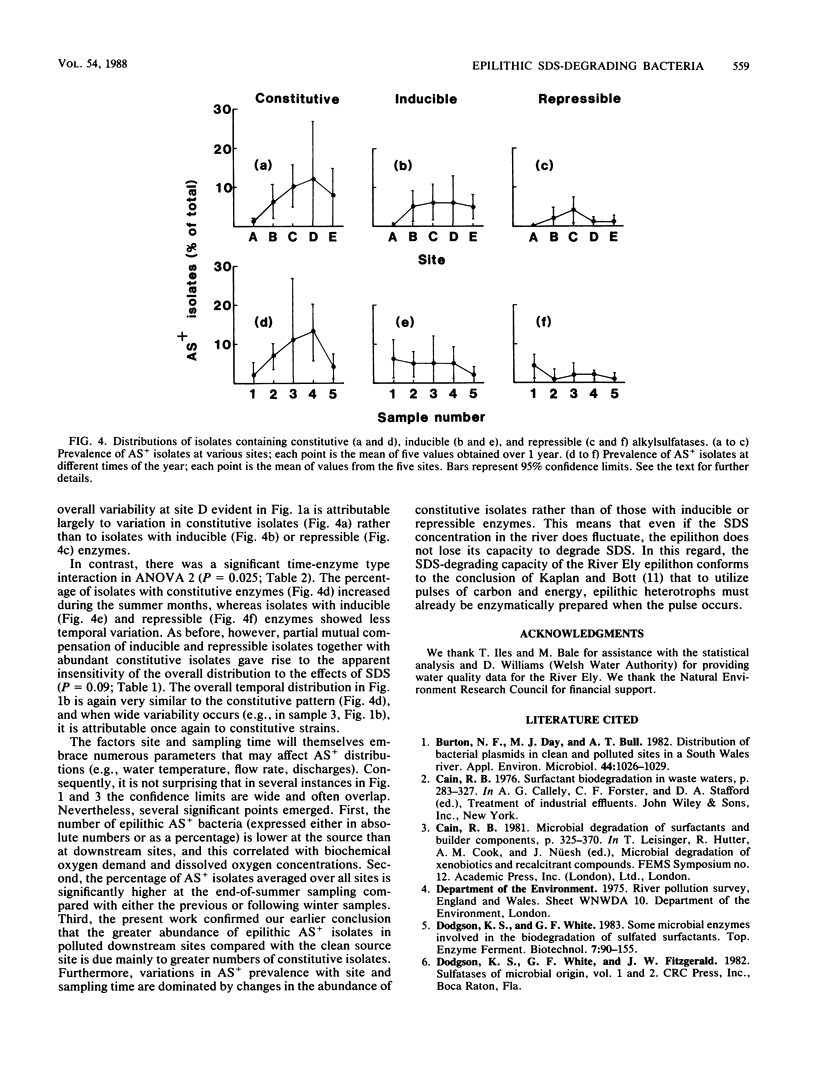
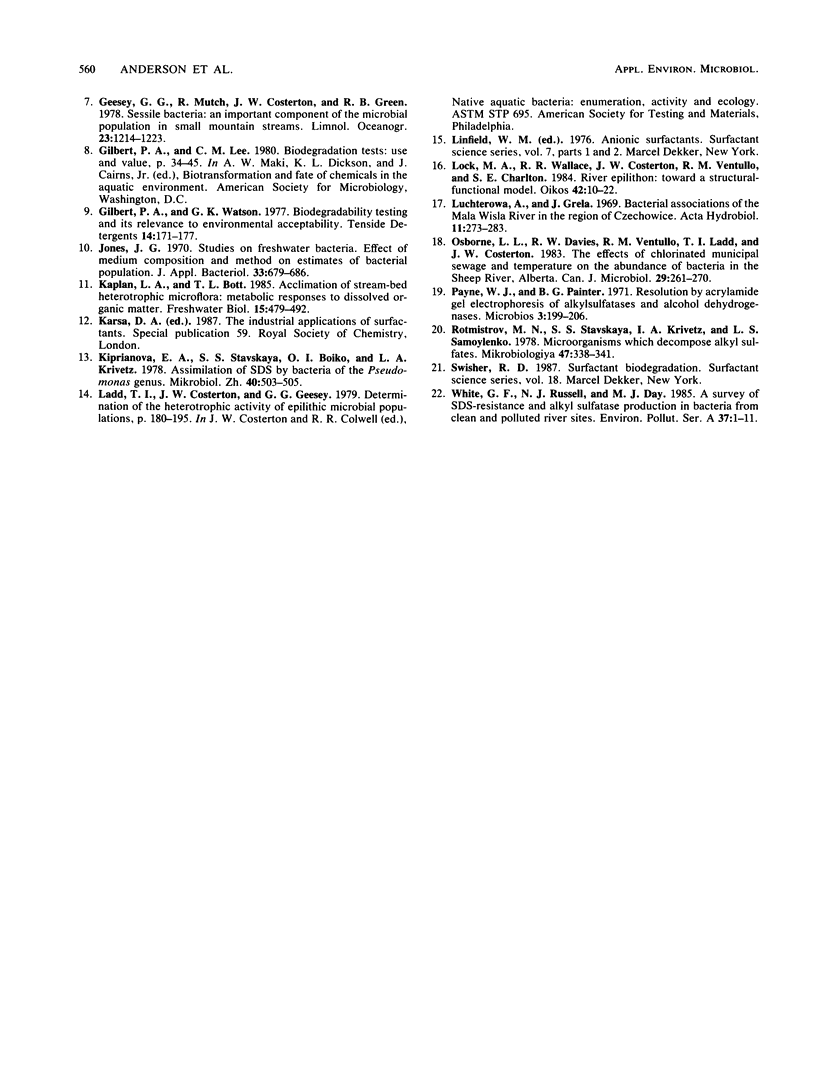
Selected References
These references are in PubMed. This may not be the complete list of references from this article.
- Burton N. F., Day M. J., Bull A. T. Distribution of bacterial plasmids in clean and polluted sites in a South Wales river. Appl Environ Microbiol. 1982 Nov;44(5):1026–1029. doi: 10.1128/aem.44.5.1026-1029.1982. [DOI] [PMC free article] [PubMed] [Google Scholar]
- Jones J. G. Studies on freshwater bacteria: effect of medium composition and method on estimates of bacterial population. J Appl Bacteriol. 1970 Dec;33(4):679–686. doi: 10.1111/j.1365-2672.1970.tb02250.x. [DOI] [PubMed] [Google Scholar]
- Kiprianova E. A., Stavskaia S. S., Boiko O. I., Krivets I. A. Usvoenie dodetsilsul'fata natriia bakteriiami roda Pseudomonas. Mikrobiol Zh. 1978 Jul-Aug;40(4):503–505. [PubMed] [Google Scholar]
- Osborne L. L., Davies R. W., Ventullo R. M., Ladd T. I., Costerton J. W. The effects of chlorinated municipal sewage and temperature on the abundance of bacteria in the Sheep River, Alberta. Can J Microbiol. 1983 Feb;29(2):261–270. doi: 10.1139/m83-043. [DOI] [PubMed] [Google Scholar]
- Payne W. J., Painter B. G. Resolution by acrylamide gel electrophoresis of alkyl sulphatases and alcohol dehydrogenase. Microbios. 1971 Apr;3(12):199–206. [PubMed] [Google Scholar]
- Rotmistrov M. N., Stavskaia S. S., Krivets I. A., Samoilenko L. S. Mikroorganizmy, razrushaiushchie alkilsul'faty. Mikrobiologiia. 1978 Mar-Apr;47(2):338–341. [PubMed] [Google Scholar]


